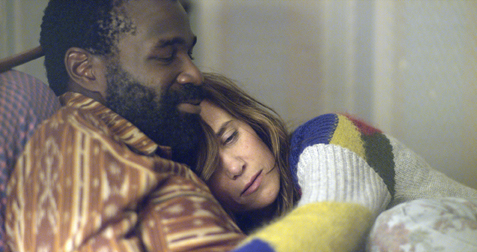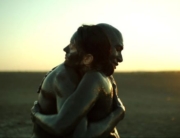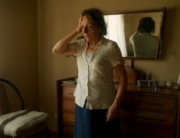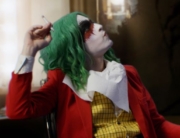Brooklyn hipsters living in their narcissistic bubble in gentrifying neighborhoods are a timely target for satire. Chilean filmmaker Sebastián Silva now lives in such a changing community, and his Nasty Baby is pitch-perfect at capturing his and his ilk’s worst pettiness, condescension, and isolation from those who came before them into their brave new politically correct world.
Silva portrays Freddy, a ditzy conceptual artist who is changing his creative direction to reflect his new personal obsessions: his love for his African-American, furniture-making boyfriend, Mo (Tunde Adebimpe), and his hopes for artificially inseminating his old friend, biological-time-clocking Polly (Kristen Wiig, in the dramatic mode she’s been taking on since The Skeleton Twins). Polly apparently got the idea from working in a fertility clinic. In an artistic version of rebirth therapy to help him prepare for fatherhood, Freddy wants to (annoyingly) reenact his infancy on videotape as a crying “Nasty Baby.”
But as desperate as Polly is, she somehow never thought to test Freddy’s sperm for viability (or maybe that’s a result of most of the story being improvised). So the first part is focused on convincing the reluctant Mo to provide the genetic material in time for Polly’s next ovulation cycle. Meanwhile, their downstairs neighbor, Richard, “the old queen” as he describes himself (Mark Margolis, in a delightful play on his usual tough guy roles), admires how gay couples can be so open now and have families, too, a lifestyle option that was inconceivable back in his day.
This mutual admiration society is constantly interrupted by the loud antics of the block’s resident eccentric who calls himself “the Bishop” (deep-voiced Reg E. Cathey). Facing imminent eviction and homelessness as his rooming house is being bought for upgrading, he may either be on drugs, meds, or booze, when he wakes the neighborhood up with a leaf-blower at dawn and aggressively harangues visitors, sometimes just verbally and sometimes hands-on. The female African-American beat cop thinks he should just be tolerated, but the residents feel increasingly threatened by him, especially at night.
The claustrophobic atmosphere gets its first dose of out-of-town reality when Freddy, Mo, and friends drive out to meet Mo’s suburban family. There is no backstory on how this disparate group got together, so presumably they haven’t met Mo’s religious parents, who aren’t all that comfortable with his gay partner, who pours on the charm. Mo’s pregnant sister is leery of the couple’s conception and child-raising plans, but the family photo albums convince the couple that they can re-create such warmth, and they proceed, somewhat explicitly.
Back in the city, Freddy wants to share the creation of his “Nasty Baby” installation with his gung-ho friends, yet another indication that he’s not comfortable coping with pressure on his own. Adding issues of masculinity, paternal roles, and responsibilities to the already complicated mix, the sunny Freddy has a terrible, horrible, very bad day and thus discovers his primal dark side. His friends instinctively react in frantic support that is so appalling that it becomes amusing. With no moral debate, each behaves on self-centered autopilot. (Is black comedy still a PC term in this fraught environment?) While not up to the gold standard of the great dark comedy on gentrification in Hal Ashby’s The Landlord (1970), or the distinctive satire of Silva’s The Maid (2009), Nasty Baby madly punctures the pompous moral superiority of Freddy and his neighbors.







Leave A Comment